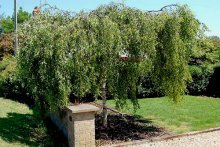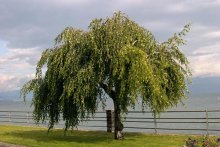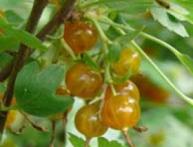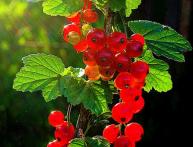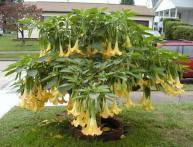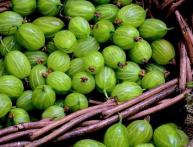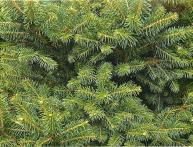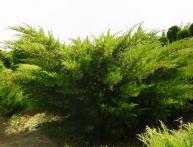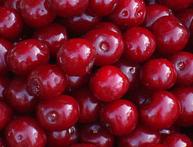Decorative birch Yungi
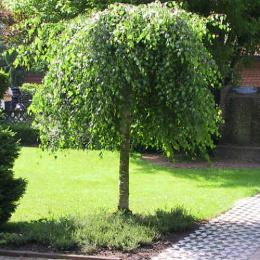
Yungi birch is a dwarf decorative deciduous tree. Jungi birch is used in landscape design. It is great for both single planting and for creating compositions.
Used to decorate large parks and alleys. It is often planted near private houses; the weeping shape of the crown, combined with a light trunk, creates a unique, refined and delicate appearance. Looks great on a green lawn and near decorative ponds.
Content:
General information about Yungi birch
It grows slowly, the annual growth is no more than 30 cm. The maximum length of the trunk is 4-6 meters, and the crown grows to approximately the same width. Tree height depends on where the grafting point was at the top or at the base. The birch trunk does not differ in appearance from its relatives; up to 7-8 years it is light brown in color, later it is white, smooth with black cracks.
The crown resembles an umbrella in shape and appearance, the branches are long and flowing. The leaves are diamond-shaped, serrated at the ends, and light green in summer. By autumn, the leaves become bright yellow. The Yungi birch blooms in mid-spring with beautiful long earrings, which are honey plants. They appear a little earlier than the leaves.
The fruits are small, elliptical in shape, lionfish. The root system of this type of birch is superficial and strong. The tree is long-lived, with an average age of 110-120 years.
Care and reproduction

Birch Yoongi - the tree is not whimsical, does not require special or special care. However, it is worth following a few simple rules when growing it at home, so that it will delight you with a healthy and green crown every year.
Subtleties of care:
- When planting a tree, you must choose a bright place. With strong shading, the growth of the birch will slow down, and the flowering and number of leaves will be much less.
- It tolerates winter frosts well; mature trees do not require additional insulation. But it is worth protecting the bark from rodents. To do this, during the cold season, the tree can be protected with a net, installing it at a distance of 3-5 cm from the trunk.
- It grows and develops well in soils of any composition; alkaline soil is most suitable, although this is not a prerequisite.
- Young birch Yunghi reacts strongly to polluted air, so it is recommended to plant mature trees in city parks and alleys.
- Due to the shallow root system, birch needs regular watering, especially during the hot summer months. But it does not tolerate overflow and stagnation of water well. To avoid this, when planting a tree, you need to put a thick layer of drainage at the bottom of the hole, which will regulate the amount of water at the roots.
- The tree, especially in the early years of development, requires regular spring feeding. This process is carried out until leaves appear on the branches. Manure, saltpeter and urea are suitable for feeding. A solution is made from these components in a ratio of 1 kilogram per 15 and 10 grams of substances, respectively, per 1 bucket of water.
- In order for the roots to breathe, it is necessary to regularly loosen the soil around the tree and remove weeds. After watering, mulching with peat is recommended.
- The Yungi birch does not need regular pruning and crown formation. In the spring, dry branches are removed with pruning shears.
Easy care and, following these rules, the tree will feel great. Care is not difficult, and the result will not take long to wait.
Reproduction of Yungi birch occurs with the help of seeds, which are recommended to be sown immediately after harvesting or in the autumn. To do this, you can use specially prepared containers with a ready-made substrate or plant the seeds immediately in the ground, and then mulch the crops with peat or sawdust. Before emergence, regular watering and removal of weeds, which can clog small birch trees, are required.
Young trees can also be obtained by separating the shoots from the roots of mature trees. This process is best carried out in the autumn. At home, you can grow birch from seeds, but if you need 2-3 trees, then it is easier to buy a ready-made adult healthy seedling.
Diseases and pests
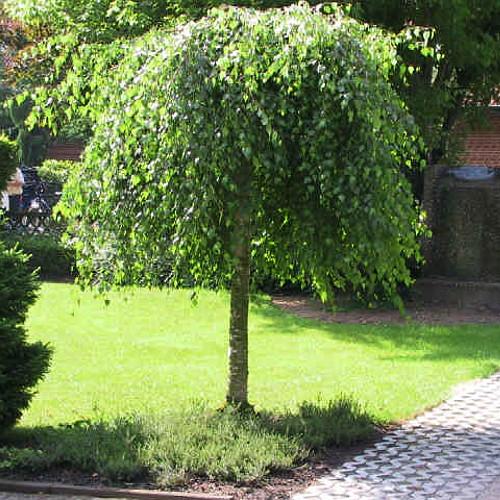
Yungi birch is susceptible to diseases, so it is worth regularly inspecting the tree and removing or treating the disease at the first symptoms:
- In spring you can spray trees and foliage to protect from caterpillars and beetles.
- The roots can be damaged by cockchafers and their larvae. To avoid these troubles and protect the plant, the soil around the tree is carefully dug up, avoiding the roots.
- Fungal diseases are removed and treated with special solutions that can be purchased at gardening stores.
When one tree is affected by pests and diseases, neighboring ones can also become infected. Regular checks and timely disinfection of plants and soil will help avoid such troubles.
Are there weeping birches? Watch the video:
Interesting information about the vegetable garden

